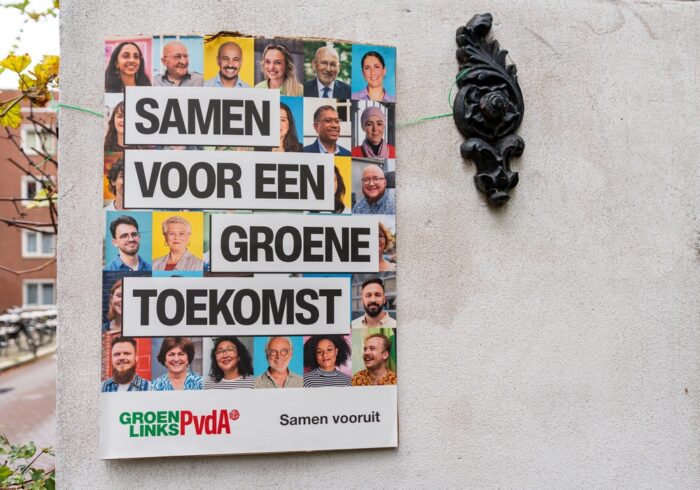The Progressive Post
Estonia: an unprecedented win for the liberal Reform Party in times of war

The Estonian elections were won by fear of another extreme right coalition government, as it had happened in the past, especially in times of war. The only party able to take advantage of this fear was the ruling Reform Party of Prime Minister Kaja Kallas, who had proven to be a strong leader since Russia’s war in Ukraine had started.
A win for a single party is unprecedented in Estonian modern history. It can be explained by two factors: the fear of war and, due to this, the fear of another government involving the populist, partly anti-Ukrainian, extreme right and nationalist, even racist Conservative People’s Party of Estonia (EKRE).
EKRE’s statements before the elections had become increasingly in sync with pro-Russian narratives. In addition, it was revealed that the founder of the paramilitary Wagner Group, the oligarch Yevgeny Prigozhin, planned to exploit EKRE’s pro-Russian rhetoric. This made many Estonian afraid of an EKRE win, or even of them getting a result that could have made them again (in coalition with the Centre and ProPatria parties) part of a coalition government, possibly even providing the Prime Minister. Publicly, EKRE was anti-Russian, but their extreme positions concerning (Ukrainian) refugees and other egoistic statements on the war and other issues, were enough for the electorate, even for those who usually do not care about politics, or who do not normally vote in elections, to come out in masses.
This was the reason for the first increase in the participation rate since 1995 (63.5 per cent, but the figure cannot be compared one-to-one with the previous elections’ turnout due to a new calculation methodology). These elections also saw for first time the electronic vote pass the 50 per cent threshold: less than 50 per cent of voters voted in person at the ballot box.
The second main winner was the new, liberal party ‘Estonia200’, which was originally a spin-off from the conservative ProPatria, and has now moved more to the centre, even recruiting a few prominent members of the Social Democratic Party (SDE), bringing with them some more progressive positions into their programme. With this positioning and new personnel, Estonia200 took many votes not only from Reform and ProPatria, but also from SDE, branding themselves as a ‘new’ party. Both Estonia200 and SDE campaigned for ‘tactical voting’ during the last week before elections: giving a vote for Reform is not enough to prevent EKRE from coming to power, as they need coalition partner(s). This seemed to have worked for both parties: Estonia200 passed the 5 per cent threshold for the first time with an impressive result of 13 per cent, and SDE lost less than opinion polls had predicted, with only one seat less and even supplanting the national conservative ProPatria with one seat more, leaving last place among the parties that entered Parliament to the latter.
The biggest loser was the left-populist Centre Party. Their main problem was their ambiguous stance on the war. Their main voter base is the Russian-speaking community, but as they were in government when the war started, they were forced to follow the Estonian official position on the war, they lost to more radical pro-Russian forces. However, their leftist promises helped them to secure a still decent third place. The biggest surprise of the elections was the strong performance of the so far almost non-existent, pro-Russian Left party and the success of an independent candidate, Mihhail Stalnuhhin, a former MP of the Centre Party, who only failed to be elected by a very narrow margin, in one of the mainly Russian-speaking constituencies. Both managed to take a considerable amount of votes from the Centre Party, thanks to their anti-Ukrainian/anti-Estonian rhetoric.
Finally, the two nationalist parties: EKRE, a populist party that tried to convince voters with anti-Ukrainian rhetoric and that they would solve the problem of high energy prices got less votes than expected, even losing compared to previous elections. As some polls had predicted that they would win the elections, or be at least neck-to-neck with Reform, many anti-EKRE voters casted their vote for Reform to bar EKRE from power. However, for the first time EKRE became the second-largest party, and it even came first among voters who voted in person at the voting office. Since their voters tend to be older people voting in the ballot booths, they now question the results of the electronic votes, polarising society even further. Their rhetoric reminds of former US president Donald Trump, in their everyday politics, but specifically after losing elections and not accepting defeat.
The conservative ProPatria did not manage to convince people to vote for them despite their strong pro-Ukrainian rhetoric. They even lost votes to its spin-off Estonia 200 and another new party called ‘the Right-Wingers’. Another reason for their weak showing was probably the controversial child benefit and other reforms they had promoted in the previous government. In addition, many voters were also afraid they would again form a coalition with EKRE. The same is true for the Centre party.
It is clear now that Kallas will continue as PM. What is still not decided however is with which parties her Refom-party will form the new government. There are four realistic combinations for a working government. Two days after the elections, Reform already proposed to Estonia 200 and SDE (60 seats all-together) to form a coalition and negotiations started the day after. This combination would be, I think, the best for Estonian. However, the two possible problems I see with this combination, are that it would mean, firstly, that SDE, as the smallest coalition partner, and as the only centre-left party in government, would find itself overruled by two bigger liberal partners, which would even have a narrow majority without SDE, and, secondly, in this combination all left and liberal parties would be in government, leaving the opposition to be composed only of the more conservative parties – something that has never happened in Estonia before –, which would polarise society even more.. But thanks to this probable ideological governmentn the same sex marriage – a long-fought issue in Estonian politics, might finally be adopted.
It is to be seen how the coalition talks proceed, but it is also clear that whatever the combination of government will be, for the next four years Reform will be the leading party and EKRE will not come to power in any combination, as the former government of EKRE, Centre and ProPatria does not have a majority anymore.
However, considering that government changes are common in Estonia (during the previous parliamentary mandate three different governments have been in charge), Reform might change partners halfway during the term. Hence, Reform might start with a more liberal government of SDE and Estonia200, but it cannot be excluded that later in the term they will swap one of the two partners for ProPatria to deal with the polarisation in the society by also bringing conservatives into government.
Photo credits: Shutterstock.com/Alexandros Michailidis




